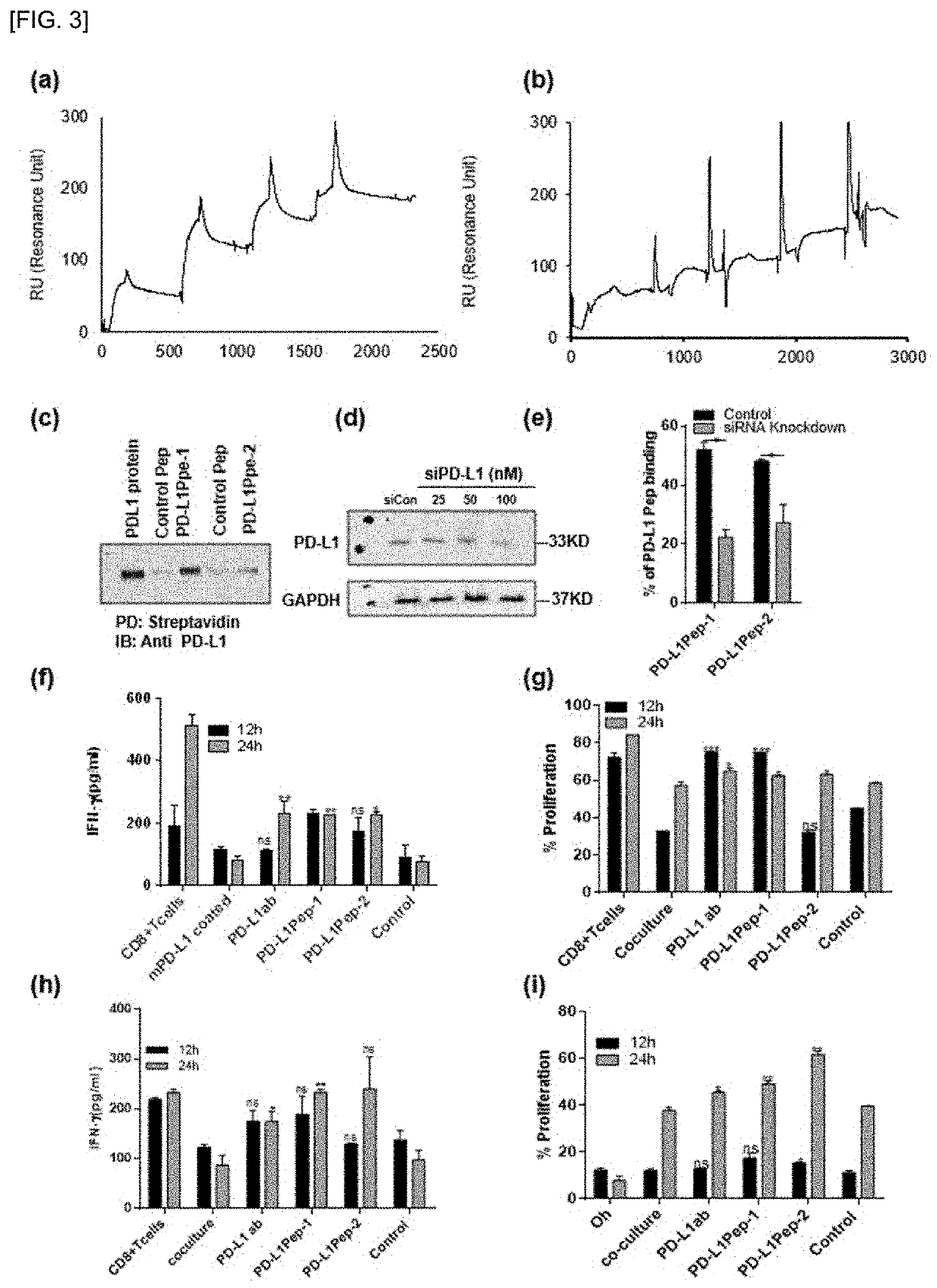Peptide bound to pd-l1 and use thereof
a technology of peptides and peptides, applied in the field of peptides bound to pdl1, can solve the problems of limited application and many patients failing to have clinical responses, and achieve the effect of inhibiting its function and high potential
- Summary
- Abstract
- Description
- Claims
- Application Information
AI Technical Summary
Benefits of technology
Problems solved by technology
Method used
Image
Examples
example
[0085]To identify the peptides that can selectively binds to PD-L1 expressing cells or block PD-L1, a T7 phage library of random peptides was screened against PD-L1-overexpressing cells. To prepare PD-L1-overexpressing cells, the GFP-tagged PD-L1 plasmid DNA was transiently transfected in Hek-293T cells and incubated for different time point (24 and 48 h). The expression of GFP-tagged PD-L1 was higher at 48 h than 24 h after transfection, as examined by microscope (FIG. 1a) and western blotting (FIG. 1b). Cells, 48 h after transfection were used for further study. After five rounds of bio-panning against the PD-L1-overexpressing cells, 4 folds of the enrichment of phage titer was obtained compared to that of the first round (FIG. 1c). Forty-four phage clones were randomly picked. The selected individual clones were subjected to polymerase chain reaction and DNA sequencing to know the sequence of the inserted clones. The sequence which appeared onto the non-transfected cells were sub...
PUM
| Property | Measurement | Unit |
|---|---|---|
| time | aaaaa | aaaaa |
| time | aaaaa | aaaaa |
| emission wavelength | aaaaa | aaaaa |
Abstract
Description
Claims
Application Information
 Login to View More
Login to View More - R&D
- Intellectual Property
- Life Sciences
- Materials
- Tech Scout
- Unparalleled Data Quality
- Higher Quality Content
- 60% Fewer Hallucinations
Browse by: Latest US Patents, China's latest patents, Technical Efficacy Thesaurus, Application Domain, Technology Topic, Popular Technical Reports.
© 2025 PatSnap. All rights reserved.Legal|Privacy policy|Modern Slavery Act Transparency Statement|Sitemap|About US| Contact US: help@patsnap.com



